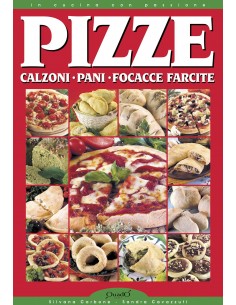- spice
- Insights
- 11232 views
- 0 comments

Pizza: a single word to define infinite variations of the same recipe that has always characterized traditional Italian cuisine and has made us so famous even outside our peninsula. Round pizza cooked in a wood oven, in a pan, by the slice, by the shovel, by the meter ... the names to call it are really many and it is always pizza. But let's shed some light on the two versions that are most popular in our home kitchens: there are those who make it round and those who prefer it rectangular cooked in a pan. What are the differences?
Many types of pizza
It is believed that the homeland of true Italian pizza is the city of Naples, even if under the term pizza there are many and different types of focaccia and leavened products in the most distant places and in the most remote times. The first attestations of the term pizza, in fact, date back to the times of vulgar Latin, that is, when Italian was not yet a real language, but an idiom in the making that was supplanting Latin. In a lamb parchment from this era found in Gaeta (and which dates back to 997) the word "pizza" appears twice and this document identifies itself with the first official testimony in Italy of the presence of a recipe called pizza. In reality, even well before, in Roman times for example, flattened and levitated focaccia already existed, but the characteristics of which we do not know with certainty. And today? Nowadays the term pizza has taken on the meaning of dough rolled out, leavened and cooked with mozzarella, tomato or with the addition of other variable ingredients. In the collective imagination, the pizza referred to is usually the round one that is eaten in wedges; but also the pizza in the pan, cut and eaten in squares, is very popular, especially among those who prepare it at home in the electric oven. Let's take a closer look at these two types of pizza, to discover their particularities and their points in favor.
Round pizza
The round pizza comes from a mixture of flour, water, yeast and salt with the possible addition of a little extra virgin olive oil. After having risen, the dough is divided into blocks which will then be rolled out in the shape of a flat disc and each will give rise to a pizza. Among the most famous round pizzas there is undoubtedly the Neapolitan pizza, which has become in the culture the synonym par excellence of the round pizza. The true Neapolitan is recognized thanks to its soft, but not rubbery, dough, in which the central part is framed by a high, soft and air bubble-filled border. The cooking of the real Neapolitan takes place in the oven (preferably wood fired) in which temperatures close to 500 ° C are developed. Roman pizza is also traditionally a round pizza. This time it is a dough with a characteristic crunchiness, thinner, in fact it only takes 2 minutes to cook, without the need for the high temperatures of the Neapolitan. Tradition has it that the dough is spread by hand by continuously turning the disc of dough between the fingers. It is a complicated method worthy of acrobatic pizza chefs specialized in this spectacular art ... In short, no one will blame you if you want to use the rolling pin.
Pizza in a pan
The pan pizza (that is, the one we also call by the slice) does not have a very dated history. His invention is a new standard that was introduced in the nineties with the widespread diffusion of electric ovens in all domestic kitchens. The recipe for this dough is defined as "highly hydrated", due to the need of the pizza by the slice to remain exposed for a few hours at times, to then be reheated when a customer buys it. It is precisely its high humidity that keeps it fresh and elastic and this innovation is due to the Roman pizza makers and in particular to Angelo Iezzi who was the first to market the Roman pan pizza formula. Its thickness is more uniform, with many air bubbles inside, but smaller in size than round pizzas with exuberant edges. The bottom is often characterized by an inviting crust, which gives structure to the pasta that grows in height. One of the points most in favor of pizza by the slice is the fact that you can buy different flavors in the same quantity. "Then give me a piece of ham and mushrooms, one of capricciosa, one of margherita and one with courgettes". And so everyone is happy! The possibility of variation certainly plays in favor of pizzerias by the slice, but apart from the variety, many like the fact that the one in the pan is a pizza with a much higher and moist, almost spongy base. Numerous varieties of doughs have originated from the classic "Roman pan", which mix various types of flours to meet the increasingly demanding tastes of customers.
Round or pan ... the important thing is the taste!
The evolution of pizza and its types is a cultural heritage that we must continue to pass on and spread. In this sense, pizza is a manifesto of culture and style: each region has its own specific personality and declines the pizza recipe according to the tradition and local ingredients available. But pizza, when it is good, is above all taste. Whether it is round, in a pan or of any shape, its flavor speaks volumes and certainly not its name.






Comments (0)
New comment